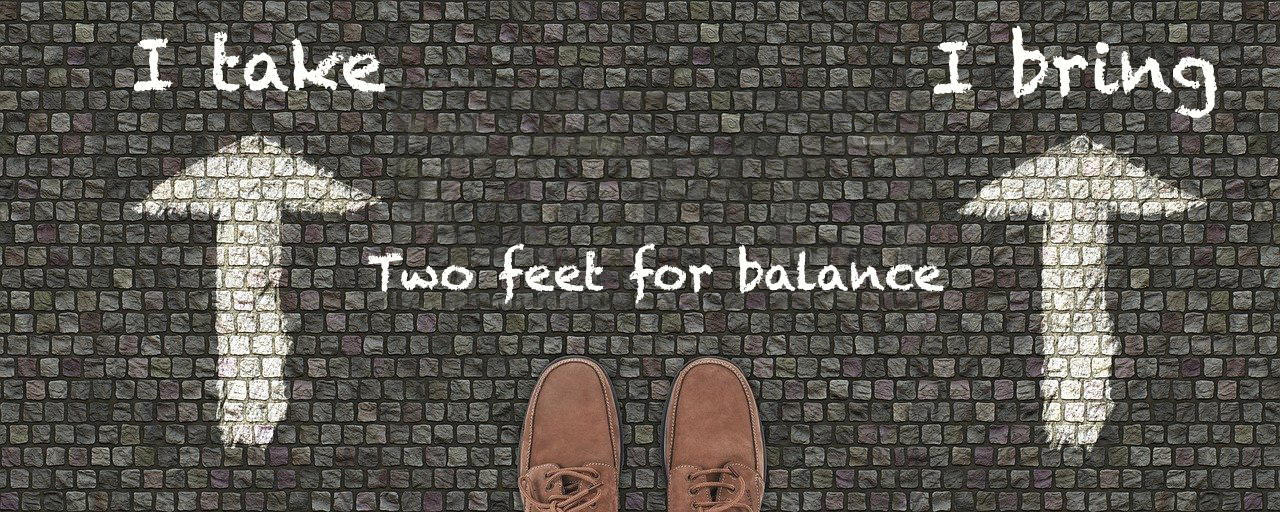Virtual or real, meetings can be a major waste. This is due to the multiplier factor: 10 minutes lost for a team of 12 people represents 2 hours of work… So ask what you bring or take away from the meeting.

Decline the invitation
I often use the metaphor of our two feet to help everyone visualize and decide what to do. You have two feet, they ensure your stability. One of your feet represents what you bring to the meeting. The second foot represents what you get from the meeting. If you don’t bring and take anything from the meeting, the best action to take is to take both your feet elsewhere.
If you don’t know why you were invited, if you’re not sure what value you’re bringing, it’s a trigger to leave the meeting or refuse the invitation. You can ask why, the answer will help you position yourself and make the right decision. Before accepting the invitation, contact the organizer. He or she can clarify (for you and others) the purpose of the meeting. In 5 minutes, you can avoid an hour of waste! And it’s always easier not to go to a meeting than to leave in the midst of one.
Invite the right participants
You can be tempted to invite everyone, or more people than required. You think you are doing well, informing as many people as possible, giving them the opportunity to choose. It’s easier and less risky.
But you contribute to FOMO syndrome: Fear Of Missing Out. Fear Of Missing Out. That’s what makes us check our phones compulsively.
Help your colleagues by limiting the invitation to the right people. If you’re not sure, ask them. Once more, in 5 minutes you can save one hour of waste, a real quick gain!
And remember that the more we are, the less we do. This is social loafing. For an effective meeting, plan for 5 to 9 participants.
Understand the purpose of the meeting
Before you send the invitation, you should have a clear goal. Why do you want to bring these people together? After the meeting, what will have changed? For the organization, for the participants, for you?
This objective should be specified in the title or description of the meeting. You help participants confirm the value they bring or earn in this meeting. You also help them prepare. Everyone will join with the right mindset.
Why make an agenda
- List the steps required to achieve the goal
- Organize topics to create momentum, or at least a logical flow
- Predict the time required for each step or topic
- Ensure that you have time to deal with all the topics
- Dynamically adjust the topics during the meeting
- Inform participants of the progress
- Let everyone decide whether they participate in part or all of the meeting
- Have a reminder for the day of the meeting, especially if it is in several days/weeks
- Simplify note-taking during the meeting
Ensure you have achieved the goal
We are in the last two stages of the PDCA:Check and Act.
You first planned the meeting with the right participants, and sent a clear and precise goal and agenda. You facilitated the discussion, using the agenda.
Now we have to close the loop. What decisions have you made? What actions have been taken? The easiest way is to send the list of actions to the participants and then follow up. Is your goal achieved? How do you know?
When there is no concrete action, how can we determine that the goal is being achieved? You can close the loop at the end of the meeting, with a quick hands vote. This is the case for information or change management meetings.

Otherwise, you will have to ask yourself about your meeting: have you planned correctly? If the goal is not met, what are the next actions? The PDCA wheel is spinning, so it’s a new planning step that begins, based on the learnings of the previous one.
The trap of recurrent meetings
In this New Year, I challenge you to improve the content of one recurring meeting. Recurrent meetings are the most at risk of waste. Planned well in advance, to track a project or share information in a team, they are rarely questioned.
It’s the same principle: why do you meet? Is the goal still relevant? Do the agenda, the frequency, the participants still contribute to the achievement of the goal? What adjustments or changes are required?
Whether you’re organizing or participating in the meeting, you can take action so that no one loses their time!
